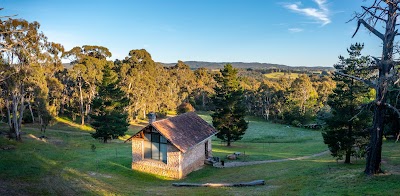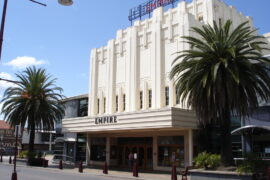A cheerful Parents’ Guide to Hans Heysen’s The Cedars Andrews Farm
Hello lovely parents! Welcome to a delightful journey of exploration and discovery. Today, we’re delving into a world of art and history, heading down the charming path of Hans Heysen’s The Cedars Andrews Farm. Enrich your kids’ appreciation for culture, history and art with this must-visit destination.
So, fasten your seatbelts as we glide smoothly into the fascinating world of one of Australia’s most prominent makers, Hans Heysen, and his well-acclaimed work, The Cedars!
Getting to Know Hans Heysen
Before we delve fully into The Cedars, it’s crucial to understand the magician behind the masterpiece – Hans Heysen himself.
Who is Hans Heysen?
A name synonymous with Australian visual arts, Sir Hans Heysen was a celebrated landscape artist and portraitist renowned for his mastery in watercolor painting. Born in Germany in 1877, but settling with his family in Adelaide, Australia at the tender age of 7, Heysen became integral to the Australiana artistic legacy, leaving an indelible mark on the heart and soul of its cultural heritage.
Navigating the Wonders of The Cedars Andrews Farm
Now that you’ve gotten a taste of who Hans Heysen is, let’s traverse the captivating landscapes of The Cedars Andrews Farm.
What is The Cedars Andrews Farm?
Not just a simple manifestation of Heysen’s artistic prowess, The Cedars is actually his beloved home and studio, located amidst the breath-taking countryside of Hahndorf in South Australia. Jam-packed with historical significance and preserved painter paraphernalia, The Cedars provides a peek into Heysen’s domestic and artistic life.
Why Visit The Cedars?
Think beyond traditional. The Cedars is not your typical art museum. It’s an enchanted adventure filled with art, history, and natural beauty. Exploring Hans Heysen’s The Cedars with your kids is an opportunity to cultivate their interest in the art world, foster appreciation for Australian history, and encourage their creative abilities.
Stay tuned for the rest of this guide as we dig deeper into the heart of The Cedars Andrews Farm and unveil more of its treasures. From practical tips to some secret spots within the property, we’ve got you covered in making your visit a memory your family will cherish forever!

Credit: Google Maps
What to do at The Cedars?
Explore the Studio and House
Walking into Heysen’s artist studio is akin to stepping into a time capsule – with painting materials, sketches, and artworks untouched since the artist’s last use. The home is a regal Edwardian villa, filled with family heirlooms and beautiful furniture. Here, your kids can imagine life as it was during Heysen’s time.
Garden and Nature Wa lks
Visit the enchanting gardens that inspired so many of Heysen’s paintings. Bring along your picnic blanket and enjoy a family picnic amidst art and nature. There’s also a nature trail along the historic property and bushland providing a perfect opportunity for an exciting family walk.
Making the Best of Your Visit
Timing Your Visit
The Cedars is open from Tuesday to Sunday, 10 AM to 4:30 PM. Plan your visit accordingly, taking into consideration the travel time, meal times, and the desired pace of exploration.
Tickets and Tours
Admission fees to The Cedars include the option for self-guided exploration or guided tours of the property. Taking a guided tour is suggested for first-time visitors. It’s an excellent way for the kiddos to hear Heysen’s story directly from knowledgeable guides.
Wrapping Up the Journey
A visit to Hans Heysen’s The Cedars Andrews Farm nudges your children’s curiosity, sparks their creativity, and teach them about the richness of Australian art and history. It is a trip that surely guarantees not just knowledge but a treasure trove of joyous family memories. Whether you’re on a grand South Australia adventure or a simple family day out, ensure The Cedars is on your itinerary.
Just remember, every painting has a story, and each story sparks imagination. So, let the world of Hans Heysen encapsulate your family in its colourful embrace. Happy exploring, wonderful parents!
Preparing for Hans Heysen – The Cedars Andrews Farm: Key Info for Parents
If you’re planning a family visit to the fascinating Hans Heysen – The Cedars Andrews Farm, there are several vital bits of information to ensure everyone has a fantastic time. This iconic location showcases the work and life of Hans Heysen, a renowned South Australian artist.
1. Understand The Farm’s Historic Significance
Your children should know about the importance of The Cedars. The farm is not just a tourist destination—it was the home and studio of Hans Heysen. His work resonates with Australian history, culture, and nature, making the visit educational and enjoyable.
2. Research the Artwork Before Your Visit
If your children understand and recognize some of Heysen’s famous paintings, they may find the visit more inspiring. His landscape paintings and portraits are iconic, and help your child understand the nuances in each work.
3. Respect the Rules
The Cedars is a significant landmark, and it’s crucial that visitors demonstrate respect. Help your children understand the importance of not touching artworks or crossing boundaries in historic home tours.
4. Pre-book Your Visit
To avoid disappointment, it’s a good idea to pre-book your visit. Many popular areas, such as guided house tours and art studios, can fill up quickly, and pre-booking secures your spot.
5. Prepare for Outdoor Exploration
Finally, remind your children to dress for an outdoor adventure. The Cedars is housed on more than 60 hectares of beautiful land with walking trails to be explored. Comfortable shoes and appropriate clothing are a must.
By preparing your child for their first visit to Hans Heysen – The Cedars Andrews Farm, you can inspire a genuine appreciation for art, culture, and history.
For more great articles please see here. For more information please see here
Disclaimer
The articles available via our website provide general information only and we strongly urge readers to exercise caution and conduct their own thorough research and fact-checking. The information presented should not be taken as absolute truth, and, to the maximum extent permitted by law, we will not be held liable for any inaccuracies or errors in the content. It is essential for individuals to independently verify and validate the information before making any decisions or taking any actions based on the articles.




